Transporting/Phases (18)
1/35
There's no tags or description
Looks like no tags are added yet.
Name | Mastery | Learn | Test | Matching | Spaced |
|---|
No study sessions yet.
36 Terms
High-Energy Compounds
Our food has energy, but cells can’t use it directly. The energy is slowly released and stored in special molecules like ATP. ATP has three parts called phosphates. When one part breaks off, it gives the cell energy to do work. The leftover is called ADP, which can be turned back into ATP again.
Our food has energy, but cells can't use it directly. The energy is slowly released and stored in special molecules like ATP. ATP has three parts called phosphates. When one part breaks off, it gives the cell energy to do work.
The leftover is called ADP, which can be turned back into ATP again.
The reversible equation for ATP decomposition and synthesis
ATP+H2O⇌ADP+Pi+energy
ATP Hydrolysis (Decomposition) Energy Released
Step-by-Step:
Reactants: ATP (Adenosine Triphosphate) and water (H₂O)
Enzyme Involved: ATPase
Process: One phosphate group is removed from ATP.
Products: ADP (Adenosine Diphosphate), Pi (Inorganic Phosphate), and energy.
Use of Energy: Powers cellular processes like:
Muscle contraction
Active transport
Biosynthesis
ATP Synthesis — Energy Stored
Step-by-Step:
Reactants: ADP and Pi (from earlier hydrolysis)
Enzyme Involved: ATP synthase (usually in mitochondria or chloroplasts)
Energy Source:
Cellular respiration in animals (glucose breakdown)
Photosynthesis in plants
Process: A phosphate group is added to ADP.
Product: ATP (energy is now stored in the phosphate bond)
ATP → ADP + Pi
Releases energy (exergonic)
ADP + Pi → ATP
Requires energy (endergonic)
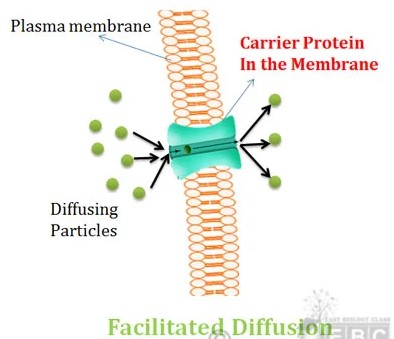
Facilitated diffusion
is a passive, selective process where specific molecules like glucose, amino acids, and ions move from high to low concentration across the cell membrane through channel or carrier proteins without using energy. (NO ENERGY NEEDED)
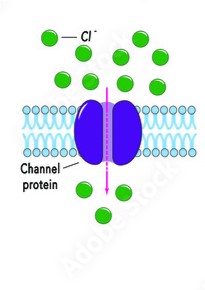
Facilitated diffusion how does it happen?
Facilitated diffusion happens when specific molecules bind to channel or carrier proteins in the cell membrane, which then help them move from an area of high concentration to low concentration, allowing them to pass into or out of the cell without energy.
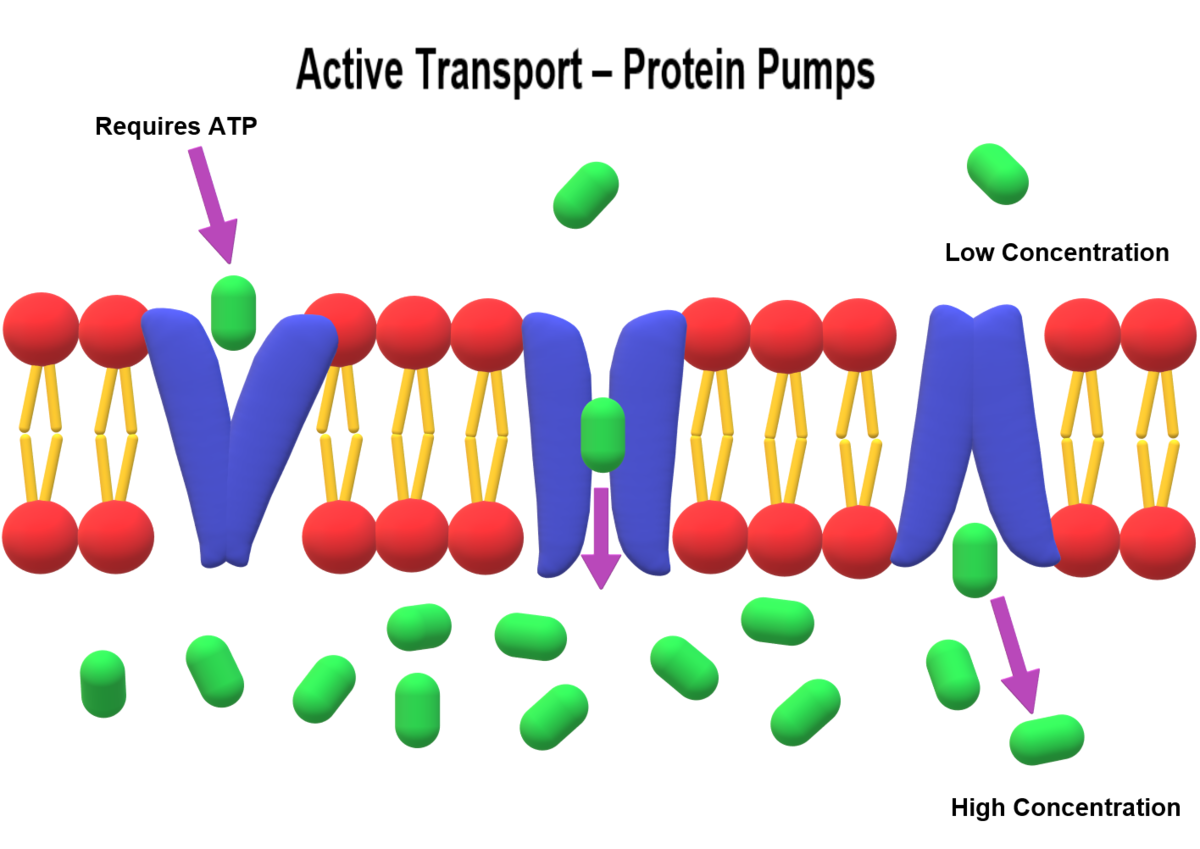
Active transport of materials
is the movement of molecules across a cell membrane against their concentration gradient (from low to high concentration), using energy (ATP) and carrier proteins. (USES ENERGY)
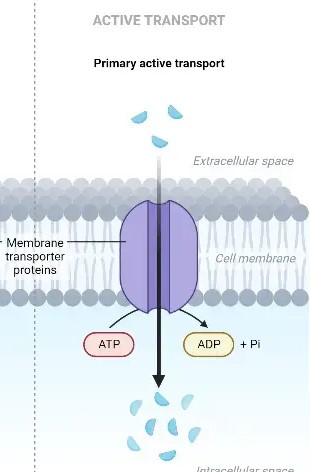
Active transport of materials How does it happen?
A molecule binds to a specific carrier protein in the membrane, ATP is used to change the protein's shape, the molecule is transported across the membrane, and the protein returns to its original shape, ready for the next molecule.
Pumps 3 Na⁺ out and 2 K⁺ in, using 1 ATP, to maintain proper electrical balance.
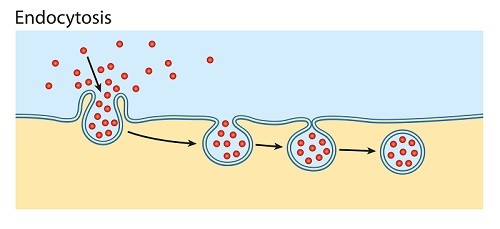
Endocytosis
is the process by which a cell engulfs external substances, such as nutrients or particles, by wrapping its cell membrane around them to form a vesicle that brings the substances into the cell.
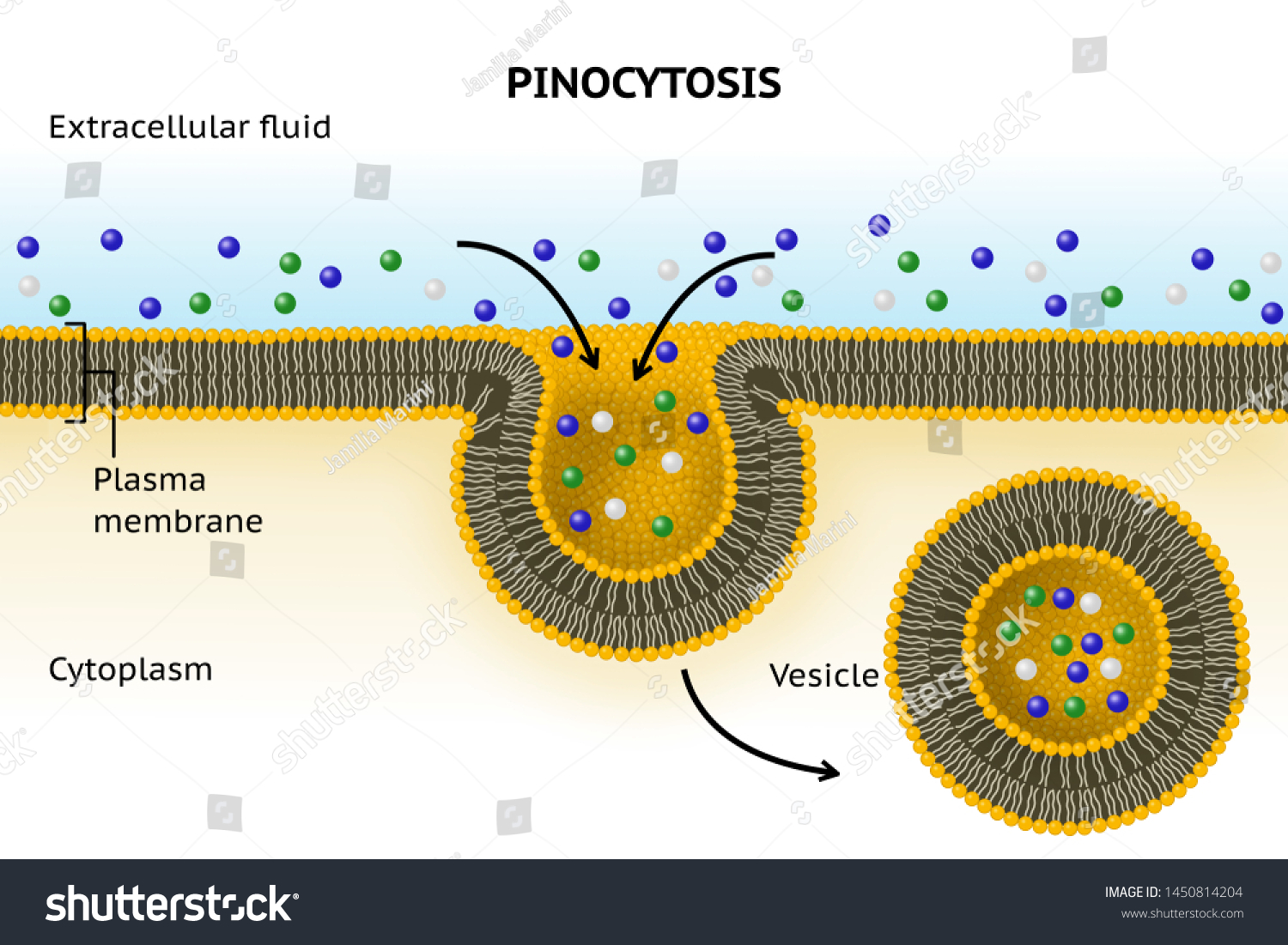
Pinocytosis
is a type of endocytosis where the cell engulfs extracellular fluid and its dissolved substances by forming small vesicles, often referred to as "cell drinking."
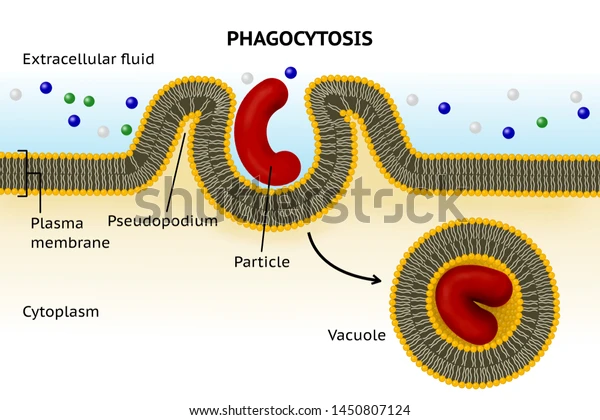
Phagocytosis
is when a cell engulfs large particles, like bacteria or debris, by surrounding them with its membrane to form a vesicle. “cell eating.”

Exocytosis
is the process by which a cell removes substances by vesicles fusing with the cell membrane, releasing their contents outside the cell.
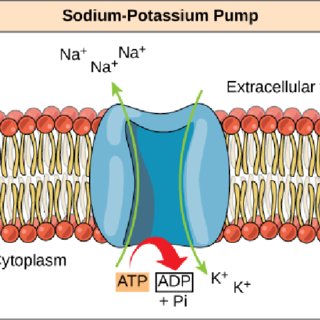
Sodium-potassium pump
is an active transport mechanism that moves sodium (Na⁺) ions out of the cell and potassium (K⁺) ions into the cell, both against their concentration gradients, using energy from ATP. Three Na⁺ ions bind to the pump inside the cell, and ATP is broken down into ADP and a phosphate group, providing energy for the pump to change shape. This change moves the Na⁺ ions to the outside of the cell. Then, two K⁺ ions from outside the cell bind to the pump, which restores the pump's shape and releases the K⁺ ions inside the cell. This process helps maintain vital cell functions, such as nerve impulse transmission and osmotic balance.
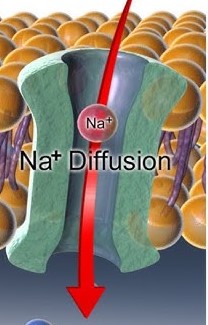
Sodium (Na+) Diffusion:
Na⁺ moves into the cell.

Sodium (Na+) Pumping:
Na⁺ is moved out of the cell.

Potassium (K+) Diffusion:
K⁺ moves out of the cell.
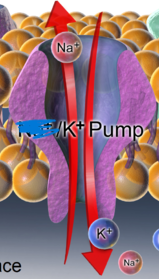
Potassium (K+) Pumping:
is moved into the cell.
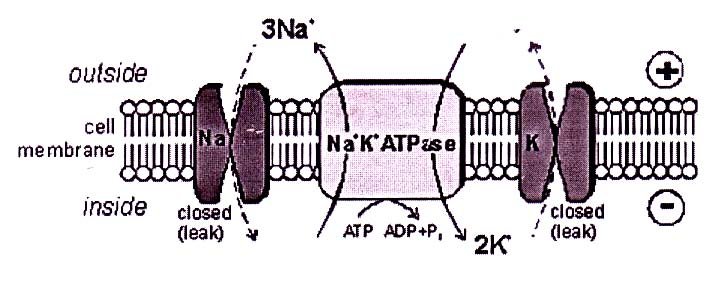
Picture of sodium potassium exchange pump
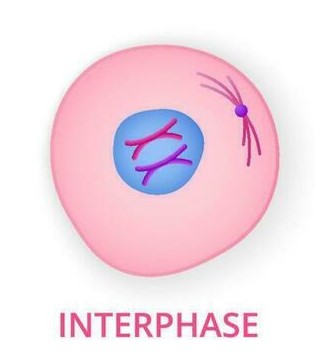
Interphase
_______ comes before mitosis (or meiosis) in the cell cycle. It is the phase where the cell prepares for division
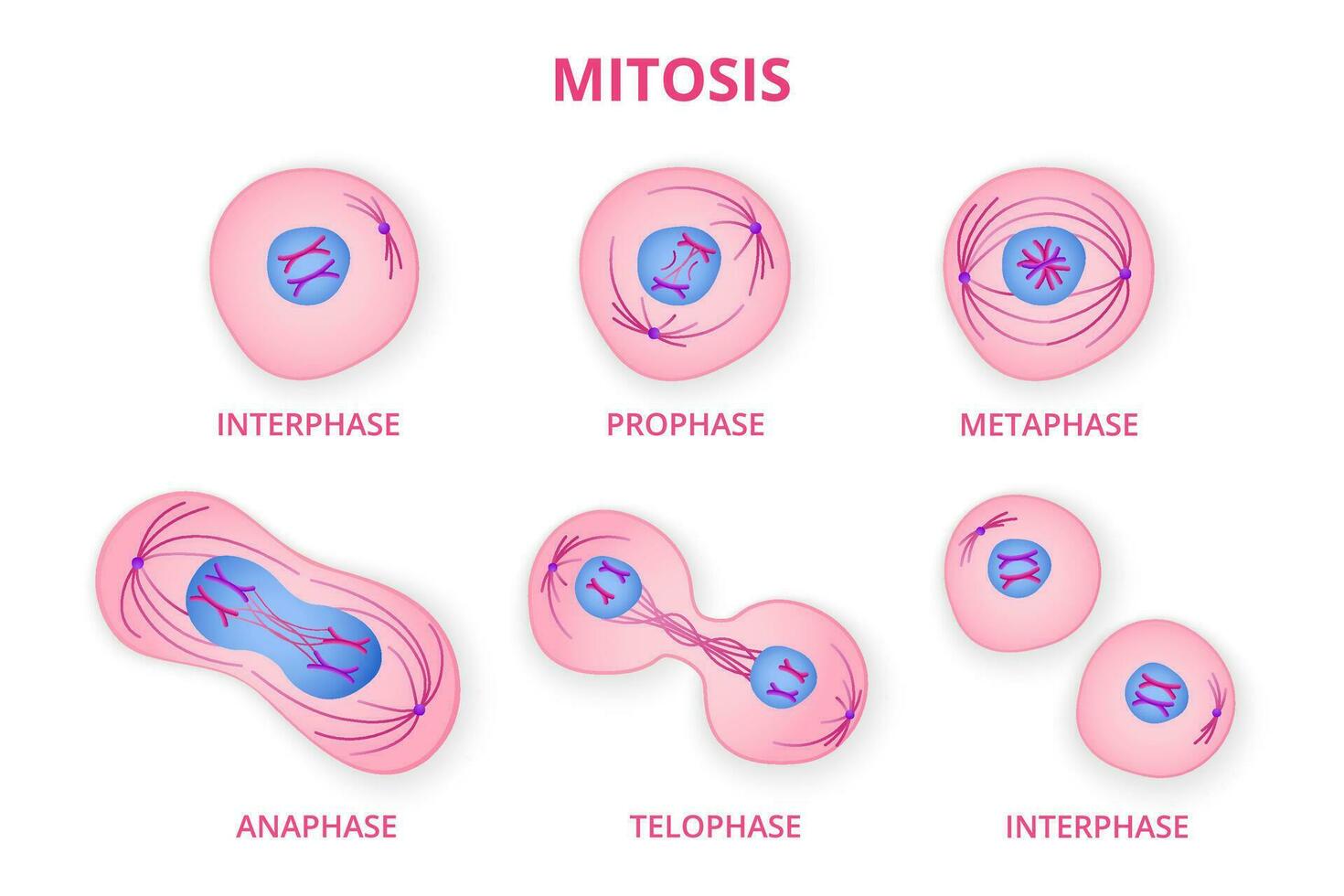
Mitosis
is the phase of the cell cycle where the cell grows, copies its DNA, and prepares for division.
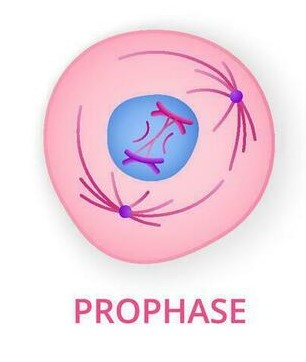
Prophase:
Chromosomes condense, the nuclear membrane breaks down, and spindle fibers begin to form.
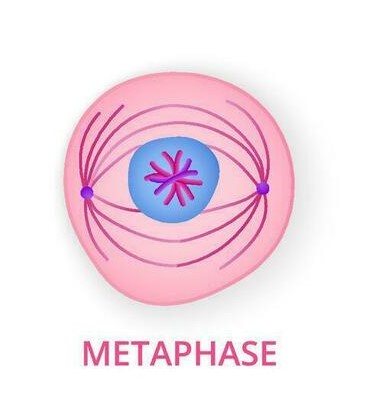
Metaphase:
Chromosomes align at the center of the cell.
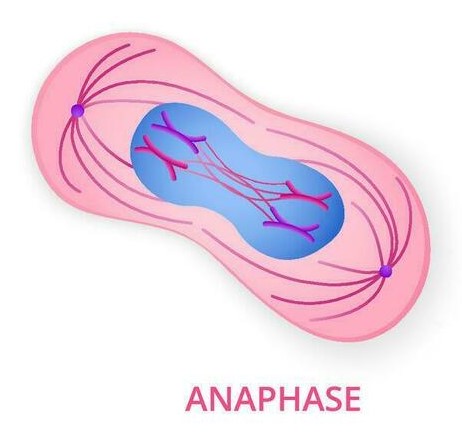
Anaphase:
Chromatids are pulled apart to opposite sides of the cell.
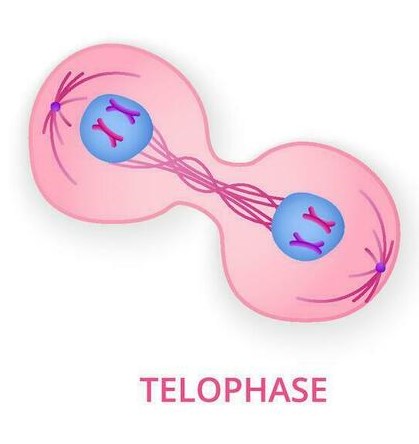
Telophase:
Nuclear membranes re-form around each set of chromosomes, and the cell begins to divide.
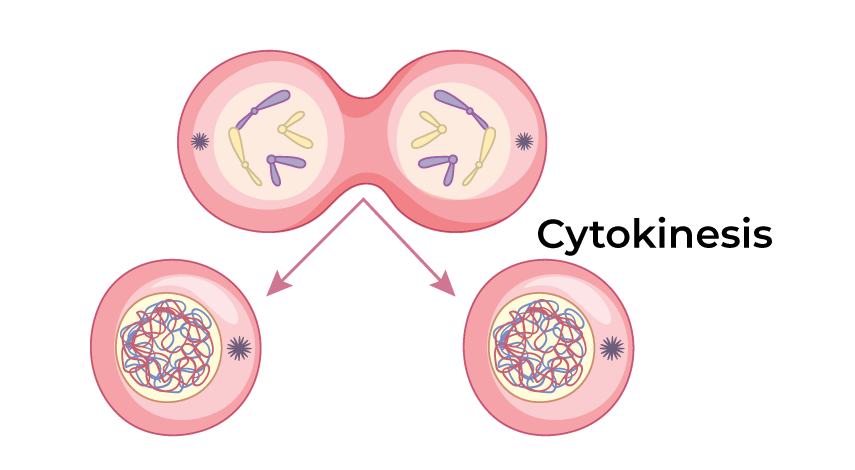
Cytokinesis:
The cytoplasm divides, resulting in two daughter cells.
G0 Phase (Resting Phase):
phase is a resting state where cells are not dividing but remain metabolically active, with some cells (like nerve cells) staying in G0 permanently, while others can re-enter the cell cycle if needed.
Resting phase (not dividing).
G1 Phase (Gap 1):
The cell grows, performs normal functions, replicates organelles, produces proteins needed for DNA synthesis, and prepares for DNA replication in the next phase.
Cell growth and preparation for DNA replication.
S Phase (Synthesis):
The cell replicates its DNA, doubling the amount of DNA to ensure each daughter cell will have a complete set of chromosomes, but the cell has not yet divided.
DNA replication.
G2 Phase (Gap 2):
The cell continues to grow, synthesizes proteins needed for division, ensures all DNA is properly replicated and repaired, and prepares for mitosis, the final step of division.
Final growth and preparation for cell division.
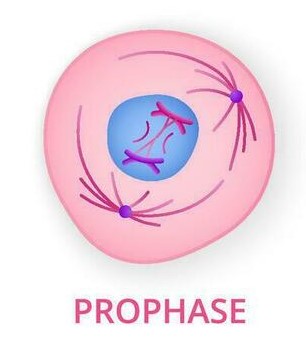
Prophase Important Event (photo all)
Chromosomes condense, nuclear envelope breaks down, and spindle fibers form.
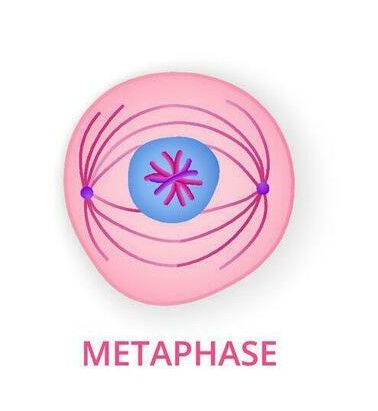
Metaphase Important Event:
Chromosomes align at the center of the cell.
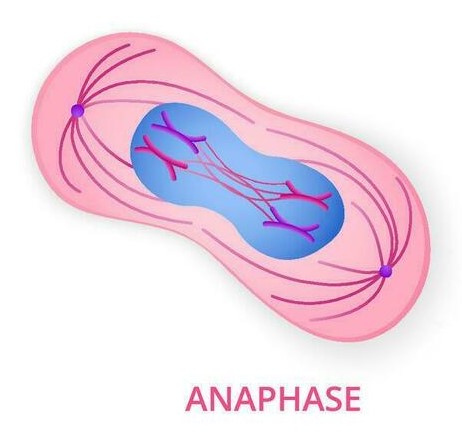
Anaphase Important Event:
Chromatids are pulled apart to opposite poles.
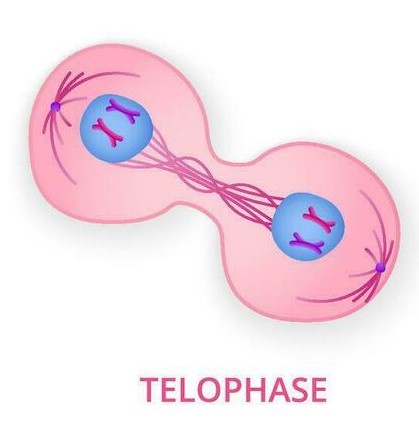
Telophase Important Event:
Chromosomes de-condense, nuclear envelopes reform.

Cytokinesis Important Event:
Cytoplasm divides, creating two daughter cells.